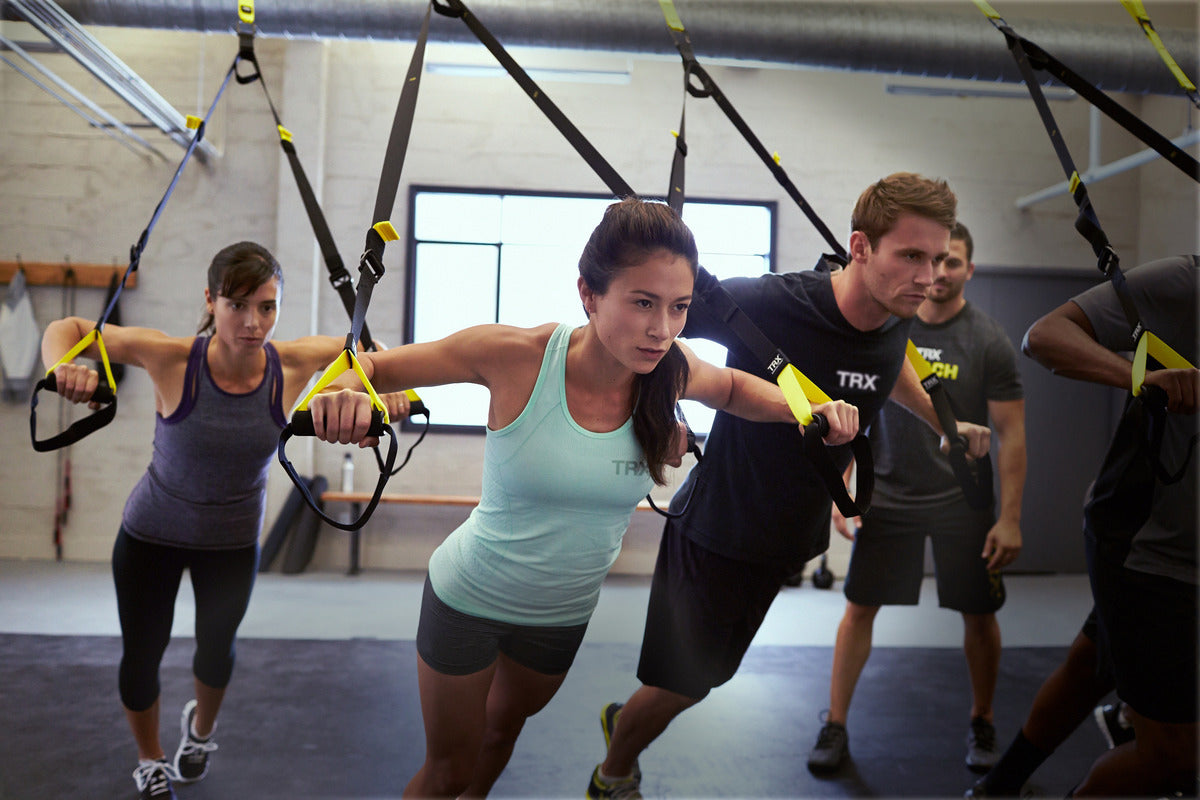Proper technique is often readily identifiable to a skilled coach. Whether you're engaging in exercises on a gym floor or following an exercise program, there are generally established guidelines aimed at minimizing the risk of injury for individuals.
The term "exercise" is deliberately employed here with a specific purpose in mind. One of its literal definitions refers to a process or activity undertaken for a particular purpose, particularly one focused on a specified area or skill.
In this blog, we will delve into the concept of good technique, also known as proper form and its significance in functional fitness. Not sure if your form is on point? Take our quick assessment quiz to get personalized feedback and technique recommendations based on your experience level and fitness goals. Furthermore, we will explore how you can attain and maintain proper technique when exercising, regardless of whether you have a coach assisting you or not.
TAKE OUR TRAINING QUIZ
Incorporating Proper Form Into Your Workout
This raises the question: What exactly constitutes proper form? (Cue the opening of a can of worms!)
Numerous exercises involve various components that engage multiple joints and tissues, each performing simultaneous actions. Additionally, different organizations establish their own specific rules regarding what qualifies as proper form, often leading to a barrage of criticism and derogatory remarks when someone deviates from these standards.
However, it's crucial to remember that every individual is unique. Factors such as body shape, skill level, and emotional disposition vary from person to person, necessitating careful consideration when prescribing exercise, as noted by Leon Chaitow et al. in the book Fascial Dysfunction: Manual Therapy Approaches.
The Centered Position
As a personal trainer and movement coach, I believe a good place to start when looking for proper form in my clients is to watch their joint angles. Each joint in your body is designed to perform specific tasks within certain tolerances. Every joint has a “happy position,” named joint centration. The happy position means that each joint should go through its full range of motion and return to its centered position.
A centered position will allow all of the tissues that support that joint, and in sequence, every joint involved in that movement or exercise, to play the proper role at the right time. If every joint can play the correct role throughout the exercise, you highly reduce the risk of injury as you navigate the stress of regulated activity.
Preventing Injury
Technique guidelines are often quoted with very technical language and are sometimes very difficult for people who don’t live in fitness land to understand.
If you’ve been on a gym floor, I’m sure you’ve heard the obligatory, “Squeeze your glutes, brace your core, neutral spine, shoulders back and down... Oh, and don’t forget to breathe!” The trainer or coach is trying to help you stay safe. The problem here is often two-fold:
- Many people do not understand what this means. And even if they do, they struggle to recall and execute all of this jargon when not actively coached by someone.
- Often, coaches are saying it but may not be watching for discrepancies in their client’s ability to perform the technical skills required.
Teaching people the correct “skill” of exercise at the start of their fitness journey is also highly important. According to a recent article by the Journal of the American Medical Association, a staggering 8.6 million sports and exercise injuries occur each year. People trying to create positive, healthy change in their life are hampered by the thing they’re doing to make that change!
How to Watch for Proper Form When Exercising
An easy way to observe all of the technical information out there is to think, “Are my joints safe?” Very literally speaking, are they within centered tolerances? And how are they affecting the joints above and below throughout the kinetic chain? As you exercise, observe your:
- Foot / ankle complex
- Knees
- Hip (the whole thing!)
- All of the spinal elements (lumbar, thoracic, and cervical)
- Shoulder girdle
- Elbows
- Wrists
- Head
Suppose you observe all of these joints and they look like they’re in a centered and strong position in relation to the joints around them. In that case, you should be in a reasonably safe position for your body in any orientation to gravity and the ground.
But, if something is out of alignment, stop! Reset. Consider reducing your range of motion or speed so that you can perform the task well. You may need to consider some range of movement improvement strategies as part of your exercise regime.
Proper Form — Do’s
- Warm Up — Before you start your entire workout, do at least 5 to 10 minutes of dynamic stretching to loosen your joints and extend your range of motion.
- Focus on Good Posture — Stay aware of your posture to ensure that you’re not straining muscles, tendons, or ligaments, which can cause injuries when exercising.
- Breathe — Proper breathing while exercising helps you to get the most out of your workout. Breathe in through your nose on relaxation and exhale fully through your mouth during exertion.
- Use Your Full Range of Motion — Using your full range of motion for any exercise can help to improve your functional training. But keep in mind not to extend beyond your natural range, which can stress your joints.
- Focus on Quality, not Quantity — It’s better to perform five excellent arm curls rather than 20 that are of poor quality. You won’t improve your athletic prowess if you’re exercising with poor form.
Improper Form — Don'ts
- Don’t Rely on Momentum — Performing any exercise with control of your movement and speed will activate more muscles. Slow down your movements to use your muscles. Avoid lifting a weight with the momentum from a swing or allowing the weight to drop back down.
- Don’t Overdo It — Working out to exhaustion is a good thing. But pushing yourself beyond that can lead to overload injury, especially if you’re not allowing your muscles to rest or recover between sets or workouts.
- Don’t Ignore Muscle or Joint Pain — Don’t try to work through the pain. If your body is in pain, your technique is likely off, and continuing may cause injury. Instead, reset, assess your technique, and consider using lighter weights.
- Don’t Add Too Much Weight at One Time — It’s essential to increase your weight slowly. Immediately jumping from a 10 lb dumbbell to a 20 lb can overload your muscles and joints, causing injury.
Consider a Coach or Trainer
If you are exercising on your own and need help with your range of movement, I would highly suggest you reach out to someone that can help you in that area — a doctor, physical therapist, personal trainer, or coach.
You need to be working with someone who cares if you’re doing the task well or not. If your coach is not helping you find the best body positions for you to learn the skill of exercise, I highly suggest you find one that is willing to take the time to coach you to find the best technique for your body. A good coach is the best way to prevent injury and make progress in your fitness journey, particularly if you’re beginning that journey.



